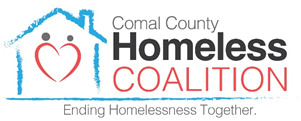-
Point-in-Time 2023 count identifies more homeless individuals in Comal County compared to previous counts

July 5, 2023
A homelessness survey conducted during a cold January morning indicates more people in Comal County may not have a permanent roof over their heads this year compared to 2022.
Local agencies and organizations annually conduct a Point-in-Time count as a snapshot of the number of homeless persons on a single day. The survey is conducted throughout the state and the country. However, the count does not capture the total number of people who experience homelessness in the community on any given day or even over the course of a year, likely missing unsheltered individuals.
The count helps non-profit agencies and organizations understand how homelessness changes over time across numerous variables such as economic conditions, societal factors and policy advancement. It also allows organizations to spread awareness, engage and build relationships with unhoused neighbors and collaboratively address gaps in community resources.
The results of the 2023 annual snapshot count identified more individuals in Comal County self-reporting as experiencing homelessness compared to prior counts and more people experiencing chronic homelessness.
This year’s Point-in-Time count, conducted by the Comal County Homeless Coalition to determine the extent of homelessness in the community, identified 98 people experiencing homelessness, compared to 89 in the 2022 count. In the 2020 count, 46 homeless individuals were identified. Additionally, the survey identified 82 youth experiencing homelessness or housing instability.
The Point-in-Time count follows the federal definition of homeless: People living in a place not meant for human habitation, in an emergency shelter, in transitional housing or exiting an institution where they temporarily resided.
Of those self-identifying as experiencing homelessness, 45 were unsheltered, meaning they were sleeping on the street or sidewalk, in an outdoor encampment, under a bridge or overpass or in a vehicle.
“There was a 113% increase in the number surveyed between 2020 and 2023 and a 10.1% increase from 2022 to 2023,” said Kellie Stallings, executive director of NB Housing Partners, citing the survey results. “This shows that we are improving on our outreach and ensuring we survey all who are residing in a shelter. At the same time, it also indicates that homelessness is growing in our community.”
The count showed that 59% of those surveyed were experiencing homelessness for the first time. Even more concerning, the survey indicated that 32% had experienced homelessness more than once. The most considerable portion of those individuals, about 40.6%, have experienced homelessness four or more times.
“Homelessness creates or exacerbates health problems, substance addictions, and mental illness,” Stallings said. “It increases exposure to physical violence, police involvement, and the need for emergency care services, straining community resources.”
According to the National Health Care for the Homeless Council, people who are homeless have higher rates of illness and die on average 12 years sooner than the general U.S. population.
Two-person volunteer teams conducted surveys of people experiencing homelessness in selected areas in Comal County during the morning hours of Jan. 26. In addition, volunteers passed out supplies to individuals, regardless of whether they chose to participate in the survey or not.
Most surveyed were between the ages of 25 to 54. However, the most considerable increase of those surveyed was for individuals ages 18 to 24, with a significant increase also seen in youth younger than 18. Currently, 8% surveyed were younger than 18, and 8% were over 65.
The survey also indicated that 22% of those surveyed reported chronic homelessness, defined as individuals living in an emergency shelter, other safe haven or on the streets for six months or longer, compared to 15 during the 2022 count.
Additionally, the count showed a 250% increase in those who have experienced homelessness longer than three years compared to the 2020 survey to 2023 and a 16.7% increase from 2022 to 2023.
“The concern about the growth in those who have experienced homelessness more than once or for longer than six months is the negative impact on the person’s ability to obtain and maintain housing or employment, as well as the negative impact on their health and life trajectory,” Stallings said.
Also, six children under age 18 and five young adults ages 18 to 24 were experiencing homelessness in January. Of those children, two were five to 12 years old.
Of those participating in the count, 5% were veterans, 25% reported a serious mental illness, 9% reported a substance use disorder, and 9% were domestic violence survivors.“Expanding affordable housing options in the community and increasing comprehensive care is vital, requiring both a healing and a housing focus, to resolve the emotional and physical cost of homelessness for both consumers and the community,” Stallings said.
A separate survey conducted in conjunction with the New Braunfels and Comal school districts identified 82 students experiencing homelessness. The survey found 75% of those individuals reported a history of family violence, 42% reported a history of child abuse, and 36% reported a history of sexual assault.
The National Runaway Safeline reports that family dynamics, abuse or neglect, mental health, and peer issues are the top four reasons a youth might run away or experience homelessness.
“Think about it this way,” the organization’s website states. In a classroom of 30 students, at least one of them will experience homelessness this year, without a safe living environment to call home and forced to couch surf, bounce among relatives and friends, live in shelters or stay on the streets.”
“These types of risk factors really impact future housing and high needs that contribute to long-term housing insecurity if these youth do not receive intervention that changes their current trajectory,” Stallings said.
To learn more, visit www.thn.org/texas-balance-state-continuum-care/data/pit-count-and-hic.
